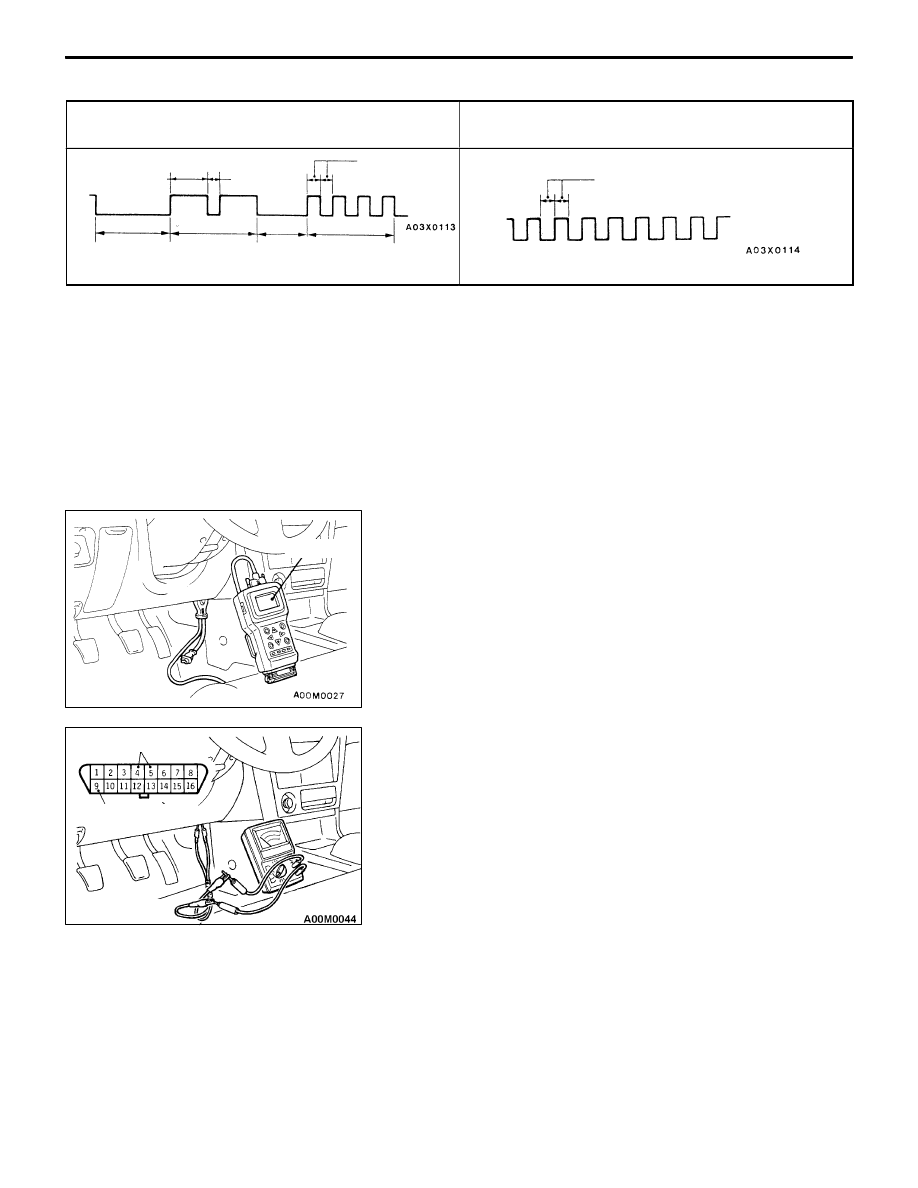Mitsubishi Lancer Evolution VI. Manual - part 3

GENERAL –
How to Use Troubleshooting/Inspection Service Points
00-9
Diagnosis result display method when using a voltmeter
Example of diagnosis code voltage wave pattern for
diagnosis code No. 24
Normal voltage wave pattern
12V
0 V
1.5 secs.
0.5 sec.
0.5 sec.
Pause
time 3
secs.
Tens
signal
Place
division
2 secs.
Units
signal
12 V
0 V
0.5 sec.
METHOD OF ERASING DIAGNOSIS CODES
WHEN USING THE MUT-
II
Connect the MUT-
II
to the diagnosis connector and erase the diagnosis code.
Caution
Turn off the ignition switch before connecting or disconnecting the MUT-
II
.
WHEN NOT USING THE MUT-
II
(1) Turn the ignition switch to OFF.
(2) After disconnecting the battery cable from the battery (–) terminal for 10 seconds or more, reconnect
the cable.
(3) After the engine has warmed up, run it at idle for about 15 minutes.
INPUT SIGNAL INSPECTION POINTS <VEHICLES
WITH ETACS-ECU>
WHEN USING THE MUT-
II
1.
Connect the MUT-
II
to the diagnosis connector.
Caution
The MUT-
II
should be connected or disconnected after
turning the ignition switch to the OFF position.
2.
If buzzer of the MUT-
II
sounds once when the each switch
is operated (ON/OFF), the ETACS-ECU input signal for
that switch circuit system is normal.
WHEN USING VOLTMETER
1.
Use the special tool to connect a voltmeter between
the earth terminal (No. 4 or 5) and the ETACS terminal
(No. 9) of the diagnosis connector.
2.
If the voltmeter indicator deflects once when the each
switch is operated (ON/OFF), the ETACS-ECU input signal
for that switch circuit system is normal.
MUT-
II
Earth terminal
ETACS terminal
MB991529